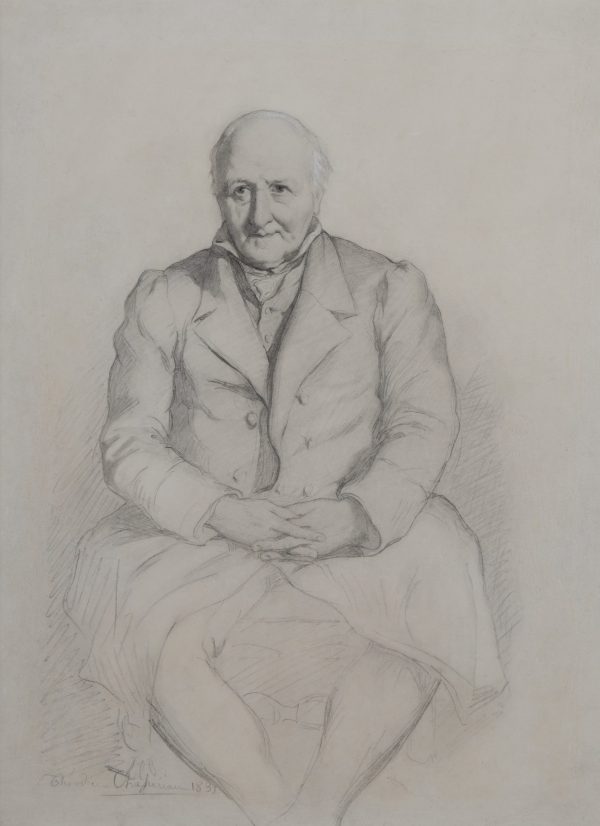Portrait of Baron Charles de Buus d’Hollebèke Father-in-law of the Vicomte de Ranchicourt, 1839
Graphite and crayon on white paper, H. 340 mm; W. 260 mm
Provenance: Oscar de Ranchicourt, thence by descent
Private collection, Paris
- Marc Sandoz, Portraits et visages dessinés par Théodore Chassériau, Paris, 1986, p. 16-17, no. 6, ill.
- Louis-Antoine Prat, “Théodore Chassériau 1819-1856 – Dessins conservés en dehors du Louvre”, Cahiers du Dessin français, n°5, Paris, no. 21 et no. 22.
A precocious talent, Chassériau entered Ingres’ studio in 1831. During his entire life he remained profoundly affected by this education, in his mastery of drawing, in the importance given to portraits and in his monumental compositions.
Chassériau is said to have reconciled in his work the opposing trends of his time: he reputedly combined the colour and expression of Delacroix and the line and construction of his teacher Ingres. Nevertheless, his entire oeuvre, in its strength and sensitivity, is highly personal to the point of influencing artists of the next generation such as Gustave Moreau and Puvis de Chavannes.
Dated 1837 and 1839, our two drawings are from the period after Ingres was appointed director of the French Academy in Rome in 1834. Not being able to follow his teacher to Rome immediately due to lack of funds, Chassériau, who was fifteen at the time, was left up to himself, but already showed that he was fully master of his craft. At the Salon of 1837, he exhibited six paintings, four of which – portraits – are now at the Louvre: the Artist’s Mother, Adèle Chassériau, Ernest Chassériau, the Painter Marilhat. His success at the Salon of 1839 (with Marine Venus and Suzanne Bathing, Louvre) earned him a commission that financed his travel to Italy the following year.
Like Ingres, Chassériau enjoyed depicting members of his family and his friends in drawn portraits. These works were very popular at a time when photography was only beginning. Ingres had made them a speciality: he created nearly 500 such drawings and sold a large proportion of them. Chassériau on the other hand, only portrayed his intimates, to whom he almost always gave the works.
It is in his drawn portraits that Chassériau remained closest to the influence of his master Ingres. They repeat with scrupulous precision the features of his models and show perfect technical mastery combined with great psychological understanding. The portrait of the Baron d’Hollebèke, with its carefully drawn face in strong relief seems to indicate, according to Marc Sandoz, a new development in Chassériau’s work as a portrait artist. It seems possible to compare it to a drawing in a similar vein by Ingres: Portrait of the Painter Granet (Paris, musée du Louvre).

